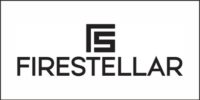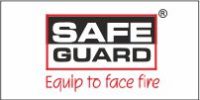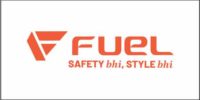Analysis of the Rajkot Gaming Zone Fire Incident
 The devastating fire at the Rajkot gaming zone, which resulted in the tragic loss of 27 lives, has brought to light several critical safety lapses that need urgent attention. Based on observations from visiting professionals, the possible causes and recommended safety measures are outlined below.
The devastating fire at the Rajkot gaming zone, which resulted in the tragic loss of 27 lives, has brought to light several critical safety lapses that need urgent attention. Based on observations from visiting professionals, the possible causes and recommended safety measures are outlined below.
Possible Causes
One of the primary causes identified is the inadequate number of fire exits. This severely hindered the evacuation process, trapping many inside the premises. Additionally, the timing of welding activities was highly inappropriate. Welding, which is inherently hazardous, was carried out during operational hours when the facility was occupied, exacerbating the risk of fire.
Recommendations for Improved Safety
- Fixed Gaming Hours: To enhance safety and manage the crowd effectively, the gaming time should be fixed. Establishing specific hours for gaming will help in organizing the flow of people and ensure that safety protocols are strictly followed during these times.
- Controlled Entry and Exit: There should be no continuous entry and exit during gaming sessions. Implementing a controlled entry and exit system can prevent overcrowding and ensure that the facility is not overwhelmed with too many occupants at once.
- Batch-wise Gaming Sessions: Gaming sessions should be conducted in batches. This approach will not only help in managing the number of people inside the facility at any given time but also make it easier to conduct orderly evacuations if necessary.
- Restricted Maintenance During Operating Hours: Maintenance or repair activities should not be carried out while children or other occupants are present. Any necessary repairs should be scheduled during non-operational hours to avoid unnecessary risks.
- Adequate Exit Doors: While having a single entry door may be sufficient for controlling access, multiple exit doors are crucial for ensuring quick and safe evacuation during emergencies. These exits should be clearly marked and free of obstructions.
- Prohibition of Welding on Working Days: Welding activities should not be conducted on days when the facility is open to the public. The sparks and heat generated from welding pose a significant fire hazard, especially in an environment filled with combustible materials.
- Welding Safety Protocols: When welding activities are necessary, they must not be carried out without proper assistance. A fire extinguisher should be readily available in the vicinity, and an assistant should be present to handle any potential fire outbreak promptly.
The tragic fire at the Rajkot gaming zone endorses the urgent need for stringent safety measures and protocols. By implementing fixed gaming hours, controlling entry and exit, conducting batch-wise gaming sessions, restricting maintenance during operational hours, ensuring adequate exit doors, prohibiting welding on working days, and adhering to strict welding safety protocols, similar incidents can be prevented in the future. It is imperative that these recommendations are taken seriously and integrated into the standard operating procedures of such facilities to safeguard lives and enhance overall safety.
Analysis of the Dombivli Chemical Factory Blast Incident
The catastrophic blast at a chemical factory in Dombivli, resulting in the tragic loss of over 20 lives, highlights severe lapses in the handling and storage of hazardous materials. Based on the observations from visiting professionals, several key factors and recommended safety measures have been identified to prevent such incidents in the future.
Possible Causes
The primary cause of the incident appears to be inadequate handling and storage of hazardous chemicals. Proper training and stringent safety protocols were either lacking or not followed rigorously, leading to a devastating explosion.
Recommendations for Improved Safety
- Comprehensive Training for Workers:
It is essential that all workers receive thorough training on handling the chemicals used in the factory. This training should cover the properties of each chemical, the risks associated with them, and the proper procedures for their safe handling and use. Regular refresher courses should be conducted to ensure that workers’ knowledge remains up-to-date and aligned with the latest safety standards.
- Strict Adherence to Work Permit System:
The implementation and strict adherence to a work permit system are crucial. A work permit system ensures that any potentially hazardous activities, such as maintenance or handling of dangerous chemicals, are carried out under controlled conditions with proper authorization and supervision. This system helps in assessing risks, ensuring necessary precautions are taken, and minimizing the chances of accidents.
- Methodical Storage Based on Material Properties:
The storage of chemicals should be methodically organized based on their properties and the specific recommendations for each material. Incompatible chemicals should be stored separately to prevent reactions that could lead to explosions or the release of toxic gases. Storage areas should be well-ventilated, clearly labelled, and equipped with safety equipment such as fire extinguishers, spill containment kits, and emergency showers. Regular inspections should be conducted to ensure compliance with these storage protocols.
The tragic blast at the Dombivli chemical factory underscores the critical need for stringent safety measures in handling and storing hazardous materials. Comprehensive training for workers, strict adherence to a work permit system, and methodical storage of chemicals based on their properties are essential steps to prevent such incidents. By implementing these recommendations, chemical factories can significantly reduce the risk of accidents, safeguard lives, and ensure a safer working environment. The lessons learned from this incident should drive industry-wide improvements in safety standards and practices, ultimately leading to a more secure and responsible approach to chemical manufacturing and storage.
Analysis of the Delhi Child/Infant Care Hospital Fire Incident
The tragic fire at a child/infant care hospital in Delhi, resulting in the heartbreaking loss of seven infants, highlights severe deficiencies in fire safety protocols. Based on observations from visiting professionals, the incident’s possible causes and general safety recommendations have been identified to prevent such occurrences in the future.
Possible Causes
One of the primary causes of the incident was the non-functional fire detection and suppression systems. This severe oversight meant that when the fire broke out, it went undetected for a crucial period, allowing it to spread unchecked. The lack of operational fire suppression systems further exacerbated the situation, preventing any immediate response to control or extinguish the flames. This negligence, combined with a careless attitude from the hospital owners and authorities towards maintaining these critical systems, significantly contributed to the tragedy. Regular maintenance and functional checks of fire safety equipment were clearly neglected, resulting in the systems failing to operate during the emergency.
Recommendations for Improved Safety
- Regular Checkups of Detection Systems:
It is imperative to schedule regular checkups of fire detection systems to ensure that all detectors are functional and regularly maintained. This proactive approach helps identify and rectify any malfunctions before they result in catastrophic failures. These checkups should be conducted by trained professionals who can perform thorough inspections and necessary repairs or upgrades. Implementing a routine maintenance schedule will ensure that fire detection systems are always in optimal working condition, ready to provide early warnings in the event of a fire.
- Expert Design and Endorsement of Fire Safety Systems:
Fire detection and protection systems should be designed, installed, and endorsed by certified fire safety experts. These systems must meet high standards before being submitted to authorities for clearance, ensuring their reliability and effectiveness. An expert’s involvement from the design phase ensures that the systems are tailored to the specific needs and potential hazards of the facility. Properly endorsed systems are more likely to receive approval from regulatory bodies and provide robust protection against fire incidents.
- Avoiding Shortcuts in Safety Protocols:
Taking shortcuts in safety protocols endangers lives. Organizations must prioritize comprehensive safety measures over cost-cutting and expedient solutions. Shortcuts often lead to incomplete or substandard safety installations that cannot be relied upon in emergencies. Investing in complete and high-quality safety systems may require higher upfront costs, but it significantly enhances the safety and security of the facility, protecting both property and lives in the long term.
- Beyond Minimum Compliance:
Compliance with safety laws should be viewed as the minimum requirement. To ensure optimal safety, facilities should aim for the highest standards, beyond just passing regulatory inspections. Merely meeting the minimum legal requirements does not guarantee the highest level of safety. Facilities should strive for excellence in safety practices, adopting industry best practices and continually improving their safety measures. This approach demonstrates a genuine commitment to protecting occupants and property.
- Engagement of Fire Safety Experts:
Employing fire safety experts for all stages of operations—from conceptualization to commissioning and beyond—is crucial. These experts can provide ongoing guidance and oversight to maintain high safety standards. Fire safety experts bring specialized knowledge and experience to the table, ensuring that all safety measures are appropriately designed, implemented, and maintained. Their involvement throughout the lifecycle of a facility helps identify potential risks early and implement effective countermeasures.
- Regular Training and Information Upgradation:
Continuous training of employees on fire safety protocols and regular updates on fire safety systems are essential. This ensures that staff are well-prepared to handle emergencies effectively. Training programs should cover the use of fire safety equipment, evacuation procedures, and emergency response actions. Regular drills and refresher courses keep employees’ skills sharp and ensure that they remain vigilant and capable of responding promptly to fire incidents.
- Annual Maintenance Contracts (AMC):
Implementing annual maintenance contracts for fire safety systems ensures that these systems are regularly inspected, serviced, and kept in optimal working condition. AMCs provide a structured framework for the ongoing maintenance of fire safety equipment, ensuring that any wear and tear or malfunctions are promptly addressed. Regular servicing under an AMC helps maintain the reliability and effectiveness of fire detection and suppression systems.
- Periodic Safety Audits:
Conducting regular safety audits of system installations helps in identifying potential weaknesses and ensuring that safety measures are up-to-date and effective. Safety audits should be carried out by independent experts who can provide an objective assessment of the facility’s fire safety infrastructure. These audits help in uncovering any lapses in maintenance, procedural deficiencies, or outdated equipment, allowing for timely corrections and upgrades.
- Impact of Fire on Operations and Goodwill:
Fires not only disrupt operations but also severely damage an organization’s goodwill and customer trust. Ensuring robust fire safety measures is critical to maintaining business continuity and reputation. A fire incident can lead to significant financial losses, legal liabilities, and a tarnished reputation. By prioritizing fire safety, organizations can protect their operations and uphold their reputation as responsible and safe establishments.
- Strong Action Against Non-Compliance:
Authorities must take stringent actions against habitual non-compliance by facility owners and managers. This will deter negligent behaviour and promote a culture of safety. Regular inspections and strict enforcement of safety regulations are necessary to ensure that all facilities adhere to the required safety standards. Penalties for non-compliance should be severe enough to serve as a strong deterrent against cutting corners or neglecting safety protocols.
- Value of Human Expertise:
While properties and equipment can be replaced, human expertise and lives are irreplaceable. Prioritizing the safety of employees and occupants is paramount. The loss of skilled personnel and innocent lives is a tragedy that cannot be quantified. Ensuring robust fire safety measures is a moral and ethical responsibility that goes beyond mere regulatory compliance. It involves safeguarding the well-being and security of everyone within the facility.
Conclusion
The Delhi child/infant care hospital fire is a poignant reminder of the critical importance of functional fire safety systems and the need for rigorous safety protocols. By implementing regular checkups of detection systems, ensuring expert design and installation of safety measures, avoiding shortcuts, aiming for high compliance standards, engaging fire safety experts, and conducting ongoing training and audits, similar tragedies can be prevented.
It is essential for facility managers and authorities to adopt these recommendations to safeguard lives and maintain trust and goodwill in their operations. The lessons learned from this incident should drive industry-wide improvements in safety standards and practices, ultimately leading to a safer environment for all.























































